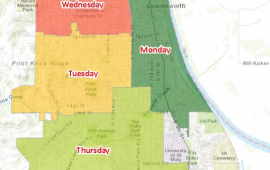City Manager Blog 1: Introduction

In 1854 the river was the freeway of commerce, and every stable landing was a natural stop. The Missouri bends in at the Leavenworth area, and the current runs along a natural limestone bluff for some miles. A small creek cut through that bluff at this point and carved out a perfect, natural riverboat landing. This Landing was the heart of old Leavenworth. The natural landscape, transportation and business combined to made Leavenworth the largest and most important city on the early Western Plains.
English visitor Thomas Gladstone described the scene this way: "A spot where the banks of the Missouri are less elevated and abrupt has been wisely chosen for the site of the city of Leavenworth. Landing from the river, there is first a broad levee of about half a mile, with a frontage of stores and warehouses full of bustle and activity. The levee is the natural river bank, ... against the steep acclivity of which the steamboat is thrust to discharge itself of its freight and passengers.
The quay is broad, being designed to receive all the business of the place and of the country behind, which receives its supplies through Leavenworth. At the time of my visit, goods of every kind lay in piles upon the quay, while the road was further blocked up with long wagons, each with six or more yoke of oxen, preparing to cross the plains."
The river was frequently closed by ice in the winter, but during the shipping season the port was very busy. In 1865 over 400 boats landed here, from which one firm alone hauled off over 50,000 tons of supplies.





